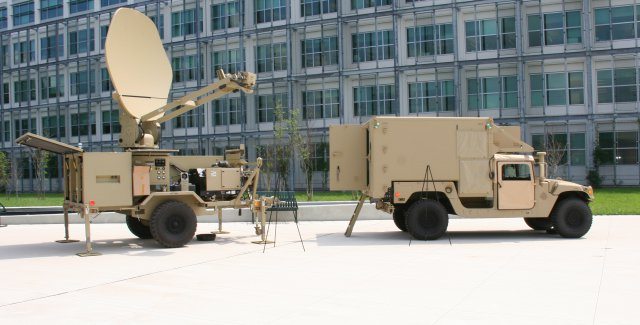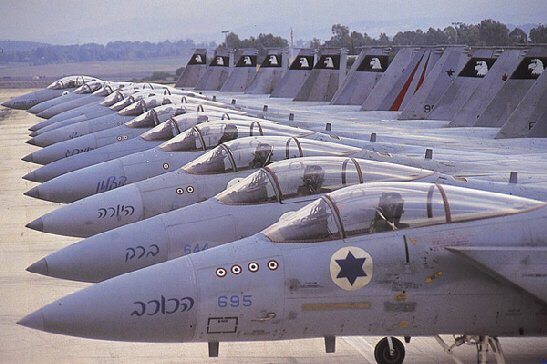The Army’s current tactical communications wide area network backbone, Warfighter Information Network-Tactical, or WIN-T, Increment 1, hit a major milestone when it celebrated the final fielding of the last unit identified to receive the system.
“Because of WIN-T Increment 1, we are a more capable and lethal force,” said Col. Ed Swanson, project manager, or PM, for WIN-T, which is assigned to the Program Executive Office for Command, Control and Communications-Tactical, known as PEO C3T. “Increment 1 was a key component to modularity and the Army’s transition to a brigade combat team-centric force. It enabled the autonomous operations of [brigade combat teams] by providing beyond-line-of-sight capabilities and supported secure and unsecure data, voice and video communications to the battalion level. Increment 1 has supported the full range of military operation in Operation Iraqi Freedom and Operation Enduring Freedom since 2004.”
The fielding completion of WIN-T Increment 1 also sets the stage for the onset of WIN-T Increments 2 and 3 of the Army’s tactical communications network, which will provide the “initial” and “full” on-the-move network communications capability to the Army.
The milestone was marked with the hand-off of the last WIN-T Increment 1 system to a unit, providing for the first time a WIN-T Increment 1-equipped force across the entire Army. To commemorate the event, a ceremony was recently held at Aberdeen Proving Ground. Many of the organization’s current and past leaders were among those who paid tribute to the accomplishment and to the system that provides critical communication capabilities to Soldiers on the battlefield.
Similar to a home Internet connection, WIN-T Increment 1, formerly known as the “Joint Network Node, or JNN, Network,” began fielding in 2004 to support operations in Iraq and Afghanistan. It provides Soldiers with high-speed, high-capacity voice, data and video communications down to battalion level units, at-the-quick-halt.
In just eight years, the Product Manager, or PdM, WIN-T Increment 1 fielded the entire Army with five Regional Hub Nodes, 18 Unit Hub Nodes,36 Unit Hub Satellite Communications, known as SATCOM, Trucks, 415 JNNs, 1422 Battalion Command Post Nodes, 1837 Satellite Transportable Terminals and 48 Single Shelter Switches.
“This is one of the those historic times in a PM when you can take a step back, take a knee and highlight one of the great milestones of a program,” said Lt. Col. Greg Coile, PdM for WIN-T Increment 1 and PdM Satellite Communications. “With WIN-T Increment 1 in hand, Soldiers can reliably execute networked mission command at a faster pace, in conjunction with joint and coalition forces, across greater distances and over terrain obstacles that once blocked vital communication signals. This capability dramatically changed the way we fight on the battlefield. I thank the WIN-T Increment 1 and SATCOM team for their dedication and selfless service to deliver this capability.”
Military operations in Desert Storm in 1992, as well as Operation Enduring Freedom in Afghanistan in 2001 and Operation Iraqi Freedom in 2003, revealed inadequacies in the Mobile Subscriber Equipment, or MSE, communications system to support highly mobile and dispersed forces in a digital environment. Before the widespread availability of satellite communications technology, battlefield communications required the installation and maintenance of relay towers and cables, limiting range and flexibility of mission support. The outdated MSE could no longer keep up with the pace of battle. WIN-T was conceived to solve this problem and to enable mobile mission command on the battlefield.
As an outgrowth of a 3rd Infantry Division Operational Needs Statement, a process that allows urgent requests from theater for equipment to be identified and rapidly fielded, the JNN network was developed to bridge the gap between the outdated MSE communications system and the “full” on-the-move WIN-T network capability.
The Army, along with congressional assistance in the form of supplemental funding, shifted priority from WIN-T to JNN. As the result of a Nunn-McCurdy restructure in June 2007, the WIN-T program was organized into four separate Increments. The JNN program was integrated into WIN-T as Increment 1.
“I don’t think people truly realize the magnitude of the impact the WIN-T Increment 1 Product Office has had on the Army,” said Col. Chuck Hoppe, former PM for WIN-T and current military deputy director for the Communications-Electronics Research, Development, and Engineering Center. “It has touched every combat fighting team that has rotated into and out of theater, every time they have rotated. It fielded the entire Army in eight years. Phenomenal.”
PdM WIN-T Increment 1 also completed the WIN-T Increment 1a upgrade in September, which establishes a common baseline across the force. Army units originally fielded with the early JNN network were upgraded to a common baseline. The upgrade provides newer technology for increased capability, a longer equipment life cycle and more efficient technology refreshments.
“It is amazing to think about this program office and the enormity of the impact it had and continues to have on the network and in supporting overseas contingency operations,” said Col. Ray Compton, former PdM for WIN-T Increment 1 and current military deputy for Edgewood Chemical Biological Center.
And PM WIN-T is not winding down; it continues to expand and improve the Army’s current and future network backbone. Initial efforts for another upgrade, the WIN-T Increment 1 Colorless Core upgrade, began in July.
This upgrade will encompass all WIN-T Increment 1 units and is expected to be completed in fiscal year (FY) 2016. The new upgrade not only increases interoperability with the second generation of the Army’s tactical network, WIN-T Increment 2, but it also improves the security and efficiency of the network.
Meanwhile, WIN-T Increment 2 completed its Initial Operational Test and Evaluation in May and is a critical part of Capability Set 13 — an integrated baseline of network technologies that began fielding to Army brigade combat teams in early October. WIN-T Increment 2 supports operations while “on-the-move,” introduces networking radios, enhances Network Operations (NetOps) for network planning and monitoring and pushes capability down to the company level.
Development and testing continues on WIN-T Increment 3, which will add new capabilities and mature previously fielded Increment 2 capabilities to realize a “full” on-the-move tactical network for the Army. WIN-T Increment 3 will add an air tier to the WIN-T architecture to offload communications from satellite transponders, while increasing network speed and reliability. WIN-T Increment 3 will also provide the Joint Command, Control, Communications, Computers, Intelligence, Surveillance and Reconnaissance (JC4ISR) radio, which makes great strides in improving throughput capacity and extending communications ranges. Improvements in NetOps will also be realized with WIN-T Increment 3.
“WIN-T Increment 1 laid the foundation for the Army’s future network,” Swanson said. “And that network will allow for a more modular, flexible force to fight anywhere in world. By having the capability to act swiftly and with greater precision and speed, unencumbered by geographical topography, networked commanders will have a tremendous effect on the outcome of future battlefield operations.”











